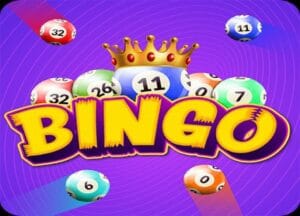Peñiculs, a term that may seem obscure to some, represents a unique confluence of tradition and modernity. As we delve deeper into its meaning and implications, we uncover a rich tapestry of cultural heritage, contemporary relevance, and societal transformation. This article seeks to explore the multifaceted nature of Peñiculs, highlighting its historical roots, its evolution in the modern era, and its impact on various aspects of society.
The Historical Roots of Peñiculs
Origins and Early Significance
The origins of Peñiculs can be traced back to ancient civilizations where it held significant cultural and societal roles. Historically, it was more than just a term; it was a symbol of tradition, often associated with rituals, customs, and community practices. These early uses of it were deeply embedded in the daily lives of people, serving as a conduit for cultural expression and continuity.
Peñiculs in Folklore and Mythology
Folklore and mythology played a crucial role in shaping the perception of Peñiculs. Stories and legends passed down through generations often featured it as a central element, embodying themes of identity, heritage, and communal values. These narratives not only preserved the historical significance of it but also reinforced its importance within the cultural fabric of societies.
Evolution of Peñiculs in the Modern Era
Technological Advancements and Cultural Adaptation
With the advent of technology and globalization, Peñiculs has undergone a significant transformation. The modern era has seen the integration of technological advancements with traditional practices, leading to the evolution of it in new and innovative ways. For instance, digital platforms have enabled the preservation and dissemination of Peñiculs-related knowledge, ensuring its accessibility to a global audience.
Peñiculs in Contemporary Art and Media
The influence of it can also be seen in contemporary art and media. Artists and creators have embraced it as a source of inspiration, incorporating its elements into various forms of artistic expression. From visual arts to music and film, it has found a place in modern creativity, bridging the gap between the old and the new.
The Societal Impact of Peñiculs
Cultural Identity and Community Building
Peñiculs plays a vital role in shaping cultural identity and fostering community cohesion. In a world that is increasingly interconnected yet fragmented, it serves as a unifying force, bringing people together through shared heritage and values. It provides a sense of belonging and continuity, helping individuals and communities navigate the complexities of modern life.
Educational and Economic Opportunities
The relevance of it extends beyond cultural and social dimensions, offering educational and economic opportunities. Educational institutions have recognized the importance of incorporating it into curricula, promoting cultural awareness and appreciation among students. Additionally, it has become a valuable asset in the tourism and creative industries, contributing to economic development and cultural preservation.
Challenges and Future Prospects
Preserving Authenticity Amidst Modernization
One of the significant challenges facing it is the need to preserve its authenticity amidst rapid modernization. As societies evolve, there is a risk of diluting the traditional essence of Peñiculs, leading to a loss of cultural integrity. Efforts must be made to strike a balance between embracing modernity and maintaining the core values and practices associated with Peñiculs.
The Role of Policy and Community Initiatives
Policy makers and community leaders have a crucial role to play in safeguarding the future of Peñiculs. By implementing policies that support cultural preservation and promoting initiatives that encourage community engagement, the continuity of it can be ensured. Collaborative efforts between governments, cultural organizations, and local communities are essential in fostering a sustainable future for Peñiculs.
Case Studies: Peñiculs Around the World
Peñiculs in Latin America
In Latin America, it manifests in various forms, reflecting the region’s rich cultural diversity. From traditional festivals to contemporary artistic expressions, it remains an integral part of Latin American culture. For example, the annual celebration of “Fiesta de Peñiculs” in Mexico showcases a blend of indigenous traditions and modern influences, highlighting the dynamic nature of it in the region.
Peñiculs in Asia
Asia presents another fascinating case study of Peñiculs, where it intersects with ancient customs and contemporary lifestyles. In countries like Japan and India, it is evident in everyday practices and grand cultural events. The preservation of it in these countries is often supported by governmental policies and community efforts, ensuring its continued relevance and vibrancy.
Peñiculs in the Digital Age
Digital Platforms and Cultural Preservation
The digital age has opened new avenues for the preservation and promotion of Peñiculs. Online platforms and social media have become powerful tools for documenting and sharing Peñiculs-related content. Virtual museums, digital archives, and interactive websites offer immersive experiences, allowing individuals to explore and engage with it in innovative ways.
Challenges of Digital Integration
Despite the benefits, digital integration also presents challenges. The digital divide, characterized by unequal access to technology, can hinder the widespread dissemination of Peñiculs. Additionally, the commodification of cultural elements on digital platforms raises concerns about the exploitation and misrepresentation of Peñiculs. Addressing these challenges requires a thoughtful and inclusive approach, ensuring that digital initiatives are accessible and respectful of cultural nuances.
The Future of Peñiculs: A Vision Forward
Embracing Innovation While Honoring Tradition
The future of it lies in its ability to embrace innovation while honoring tradition. By fostering a symbiotic relationship between the past and the present, it can continue to evolve and thrive. This involves encouraging creative interpretations of it that resonate with contemporary audiences while staying true to its historical roots.
Building Sustainable Cultural Ecosystems
Creating sustainable cultural ecosystems is essential for the long-term preservation and promotion of Peñiculs. This involves supporting local artisans, encouraging intergenerational knowledge transfer, and promoting cultural tourism in a way that benefits local communities. Sustainable practices ensure that it remains a living and dynamic part of society, contributing to cultural richness and diversity.
Global Collaboration and Cultural Exchange
Global collaboration and cultural exchange are key to the future of Peñiculs. By fostering partnerships between different cultures and communities, we can create a global network that supports the sharing and appreciation of Peñiculs. This not only enhances cultural understanding but also promotes the idea of a shared human heritage, where it serves as a bridge connecting diverse traditions and modern experiences.
FAQS
1. What is Peñiculs?
Peñiculs is a term that represents a unique confluence of tradition and modernity, embodying cultural heritage, contemporary relevance, and societal transformation. It is often associated with rituals, customs, and community practices.
2. How has Peñiculs evolved over time?
It has evolved from being a symbol of ancient rituals and customs to integrating with modern technology and creativity. It is now present in digital platforms, contemporary art, and media, reflecting the dynamic nature of cultural practices.
3. Why is Peñiculs important in contemporary society?
It plays a vital role in shaping cultural identity, fostering community cohesion, and offering educational and economic opportunities. It serves as a unifying force in an interconnected yet fragmented world, promoting cultural awareness and appreciation.
4. What challenges does Peñiculs face today?
One of the main challenges is preserving its authenticity amidst modernization. The digital divide and potential commodification on digital platforms also pose risks to the integrity and widespread dissemination of Peñiculs.
5. How can we support the future of Peñiculs?
We can support it by embracing innovation while honoring tradition, creating sustainable cultural ecosystems, and fostering global collaboration and cultural exchange. This involves supporting local artisans, encouraging knowledge transfer, and promoting respectful cultural tourism.
Conclusion
Peñiculs, with its deep historical roots and evolving modern significance, embodies the intricate relationship between tradition and modernity. As we navigate the complexities of the contemporary world, it offers a valuable perspective, reminding us of the importance of cultural heritage, community, and innovation. By embracing the richness of it and fostering its continued relevance, we can ensure that this unique cultural phenomenon remains a vibrant and integral part of our collective human experience.
Read More: Kecveto: What It Is and Why You Need It







